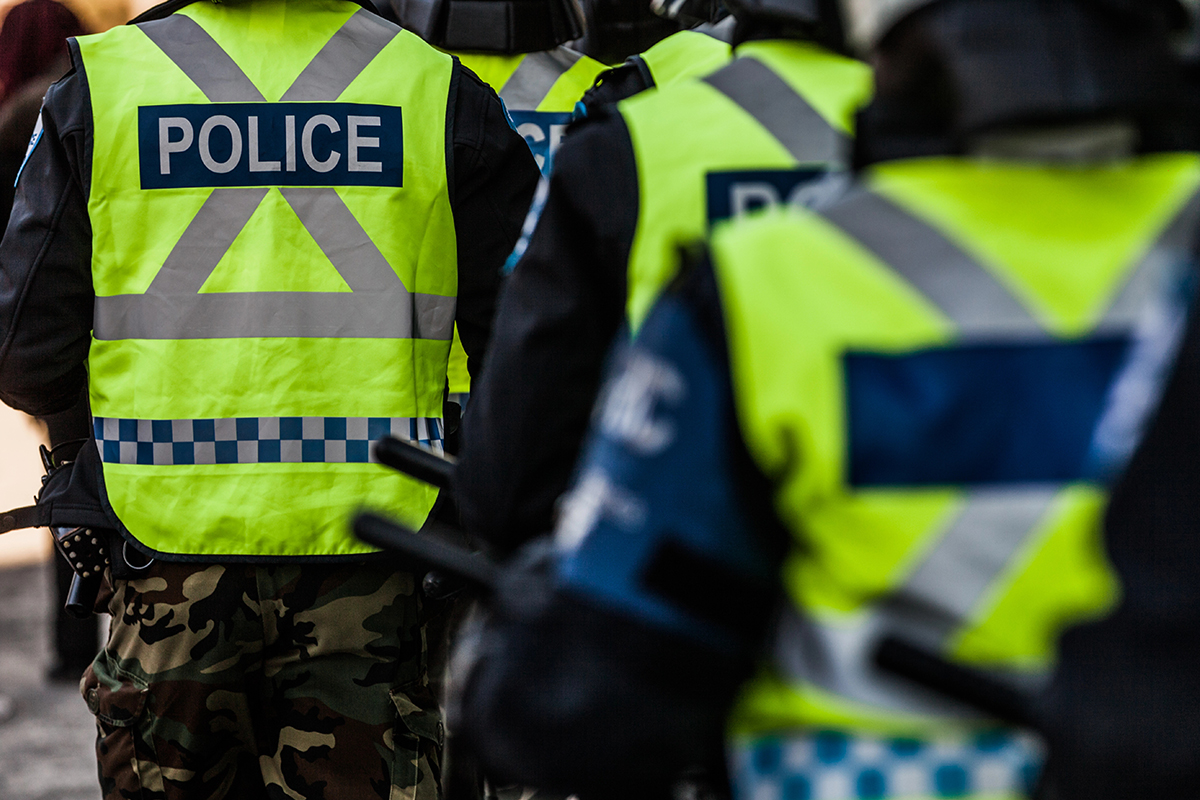If you are facing assaulting a peace officer charges, you need a criminal defence lawyer in Calgary to look at your case as soon as possible.
Assaulting a peace officer is when someone assaults a police officer, sheriff, corrections officer or other type of public officer while that officer is performing their duties. The assault can range from threatening gestures to physical contact. For additional guidance on similar charges, you might also review our page on obstructing a peace officer if your circumstances involve interference during an officer’s duties.
There are three main types of this offence, each with different consequences.
The three offences are assaulting a peace officer, assaulting a peace officer with a weapon or causing bodily harm, and aggravated assault of a peace officer.
All three of these offences are different from regular assault because they specifically protect law enforcement personnel and carry harsher penalties.
Assaulting a peace officer is a hybrid offence in Canada. This means the Crown prosecutor can choose to treat it as either an indictable offence (more serious) or a summary offence (less serious), depending on the situation.
If prosecuted as an indictable offence, assaulting a peace officer carries a maximum sentence of five years in prison. If prosecuted as a summary offence, it carries a maximum sentence of two years, a fine of up to $5,000, or both.
Strategic Criminal Defence is a top Google-rated criminal defence firm in Calgary, with over 500 5-star reviews. Our firm, and our experienced legal team, have defended clients in over 10,000 criminal cases. Leveraging our extensive network of lawyers and decades of experience, we craft defence strategies to help those accused of assaulting a peace officer beat the charge.
The lawyers at Strategic Criminal Defence are both highly experienced and dedicated to defending your rights and future in the face of these charges. Contact a lawyer today by calling (403) 719-6410.
Key Takeaways
- Assaulting a peace officer is when someone assaults an officer performing their duties.
- This is a hybrid offence, meaning prosecutors can choose to treat it as either indictable (more serious) or summary (less serious).
- If treated as an indictable offence, the maximum penalty is 5 years imprisonment.
- If treated as a summary offence, the maximum is 2 years in jail and/or a $5,000 fine.
- Even minor physical contact or threatening gestures toward officers can qualify as assault.
- Bail conditions typically include no contact with the officer involved, staying away from police stations, and sometimes restrictions on alcohol or weapons.
- Courts take these charges very seriously as they’re designed to protect those who enforce our laws.
- These charges can be successfully defended with proper legal representation.
- Common defences include excessive force by police, mistaken identity, self-defence, or lack of intent.
How Our Lawyers Help With an Assaulting a Peace Officer Charge
Our team can protect your rights and freedom from the very beginning.
- We can give you legal advice on how to deal with police questioning before you are formally charged.
- We can act as a buffer between you and the officers working on your case to make sure your rights are protected.
- We can get important evidence, such as police body camera footage, surveillance video, or witness statements, that might show officers using too much force or telling a different story than the police’s.
- In cases where injuries are involved, we may hire expert witnesses, like doctors, to talk about how your injuries are different from what the police report says.
- Our lawyers know a lot about police assault cases, such as, how the testimony of officers is usually seen in court and how to strategize your best defence.
- During the trial, we defend you by questioning the prosecution’s evidence and working to protect your rights against these charges that the justice system takes very seriously.
Consequences of an Assaulting a Peace Officer Charge
In Canada, assaulting a police officer is a very serious offence.
There are three main types of this crime, and each one has its own set of penalties.
- Simple assault of a peace officer: The Crown prosecutor can choose to treat simple assault of a peace officer as either a summary or an indictable offence. If you are charged with a summary offence, you could go to jail for up to six months and pay fines of up to $5,000. If the crime is treated as an indictable offence, the maximum jail time goes up to five years.
- Assault of a peace officer with a weapon or causing bodily harm: This is when you assault a peace officer with a weapon or severely hurt them. If you get a summary conviction, you could go to jail for up to 18 months. The maximum sentence goes up to 10 years in prison if the crime is indictable.
- Aggravated assault of a peace officer: Assaulting a peace officer in an aggravated way is the worst kind and is always a crime that can lead to jail time. It means hurting, disfiguring, or putting an officer’s life in danger. There is no minimum sentence that the law requires, but the most time someone can spend in prison is 14 years.
If you are found guilty of any of these offences, you will also have a criminal record. This could make it harder for you to travel, find a job, or get a place to live. For a more detailed explanation of potential penalties, please review our overview on Criminal Sentencing in Calgary.
Assaulting a Peace Officer Charge Defences
Depending on your facts and circumstances, these are some defences that might work in different situations:
- Too Much Force Used: If you were defending yourself against too much or illegal force, this could be a defence. Police can use reasonable force when they need to, but they can’t use more force than is necessary for the situation. This defence needs proof that the officer did more than what was necessary, so that your response was appropriate.
- Officer Duty: The officer must have been doing their job legally when the assault happened. You might have a defence if they were doing something that was against the law or not their job at the time. An officer could have arrested you without enough of a valid reason, entered into your home without a warrant or legal reason, or detained you unnecessarily. All of these could be used as proof for this defence.
- Your Intent: To commit assault, you have to use force on purpose and without their permission. If you didn’t mean to hurt them, or they accidentally touched you, you might have a defence. For example, if you were in a crowded place and someone pushed you into an officer, if you fell and grabbed an officer to steady yourself, or if you moved and accidentally hit them without meaning to, this could apply.
Assaulting a Peace Officer Charge Investigation
The main part of this investigation will start with detailed statements from the officer who was involved, and any others who also saw what happened.
- Body cams worn by police officers, their dashboard cameras in police cars, and security cameras in the area are all important pieces of evidence. These videos can show exactly what happened during the interaction, and they are often the most important proof in these cases.
- Pictures and medical reports help investigators keep track of any injuries the officer may have had. They can also keep track of any force the police used, like when and how they used restraints or other ways to control people.
- The main thing the investigation will want to determine is if there was physical contact, if it was on purpose, and if the officer was doing their job legally.
Bail Conditions for Assaulting a Peace Officer Charges
If you are accused of assaulting a peace officer and released on bail, you will usually have to follow strict conditions until your case is finished.
- One of the most common rules for bail is that you can’t talk to the police officer who says you hit them. You can’t talk to them, call them, text them, or email them. This no-contact order usually applies to any other officers who were there or are working on your case.
- The court will probably tell you to stay away from places where you might see the officer, like their patrol area or the police station where they work. You might not be able to go to the place where the assault took place.
- Depending on the facts of your case, the court may limit where you can go. For example, you might have to stay home during certain hours (a curfew) or be under house arrest, which means you can only leave for certain reasons, like going to the doctor or court.
- You might have to check in with your bail supervisor every week or even more often.
- The court might ask for one or more sureties. These people have agreed to keep an eye on you and lose money if you break the terms of your bail.
- If an officer was hurt or a weapon was involved, the court may make you wear an electronic monitoring bracelet to keep track of where you are and make sure you are following geographic restrictions.
You have to follow the law and not break any more laws while you are out on bail. If you break any of your bail conditions, even small ones, you could be charged with a new crime and sent back to jail until your trial.
For more information, visit our page on The Bail Hearing Process in Calgary.








